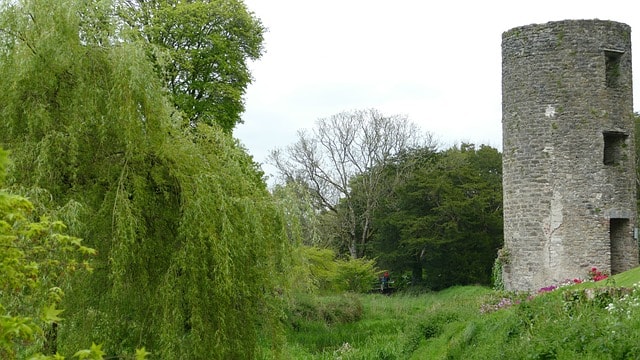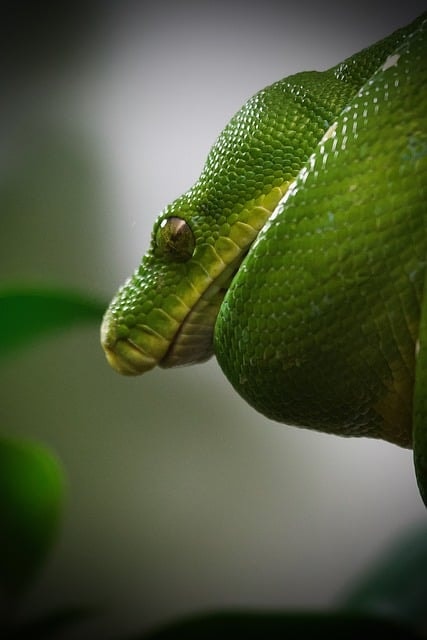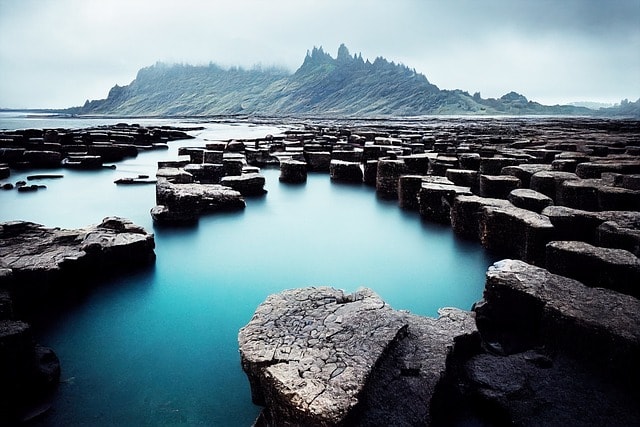10 Strange Facts About Ireland that you should know about are:
-
Kissing the Blarney Stone
-
No Snakes
-
Bog Bodies
-
Puck Fair
-
Cursing Stones
-
Irish Mammy
-
Galway's Spanish Arch
-
Newgrange Alignment
-
Giant's Causeway Legend
-
Knock Shrine
These fun facts highlight Ireland's rich cultural heritage and underscore the country's ability to blend ancient traditions with modern life. Whether it's the enigmatic bog bodies preserved through millennia, the vibrant Puck Fair celebrating a goat king, or the mystical alignment of Newgrange with the winter solstice, each fact adds a layer of depth to Ireland's fascinating narrative. Exploring these quirks offers a deeper appreciation for the island's history, natural beauty, and the enduring spirit of its people.

1. Kissing the Blarney Stone
The Blarney Stone, located at Blarney Castle near Cork, is one of Ireland's most famous landmarks. According to legend, kissing the stone bestows the kisser with the gift of eloquence, or as the locals say, "the gift of the gab." This peculiar tradition dates back several centuries and has drawn millions of visitors from around the world.
The origins of the Blarney Stone are shrouded in mystery. Some say it was a magical stone brought to Ireland by the prophet Jeremiah, while others believe it was a piece of the Stone of Scone, which was used in the coronation of Scottish kings. The stone was set into the battlements of Blarney Castle in 1446 by Cormac Laidir MacCarthy, the builder of the castle.
To kiss the stone, visitors must lean backward while holding onto iron railings. This act of bravery involves hanging upside down over a sheer drop, which is not for the faint-hearted. Despite the precarious nature of the tradition, it remains a popular tourist activity, with thousands flocking to Blarney Castle every year to take part in the ritual.
The legend behind the Blarney Stone's power of eloquence is linked to a dispute between Cormac Laidir MacCarthy and Queen Elizabeth I. When the Queen demanded that MacCarthy surrender his castle, he managed to delay the decision with his persuasive words. The Queen allegedly exclaimed that he was giving her "a lot of Blarney," thus giving birth to the term and the legend.

2. No Snakes
One of the most intriguing and interesting facts about Ireland is that it has no native snake population. This curious phenomenon is often attributed to St. Patrick, the patron saint of Ireland, who is said to have banished all snakes from the island.
Scientifically, Ireland's lack of snakes is due to its geographical history. During the last Ice Age, Ireland was too cold for reptiles to survive. By the time the ice melted and temperatures rose, the island was already separated from mainland Europe by water, making it impossible for snakes to migrate there naturally.
According to Irish folklore, St. Patrick, who is credited with bringing Christianity to Ireland, drove all the snakes into the sea after they attacked him during a 40-day fast. This symbolic act represents the eradication of paganism and the triumph of Christianity. While the legend is captivating, it is more likely that snakes were never present in Ireland due to its post-glacial isolation.
Interestingly, Ireland is not the only place without snakes. New Zealand, Iceland, Greenland, and Antarctica also have no native snake populations, largely due to their isolation and inhospitable climates for reptiles.
3. Bog Bodies
Ireland's bogs, with their unique anaerobic environment, have preserved many ancient bodies over the centuries. These "bog bodies" offer an extraordinary glimpse into the past, providing valuable information about ancient peoples' lives, deaths, and rituals.
Bog bodies have been discovered across Ireland, often accidentally during peat harvesting. Some of the most famous Irish bog bodies include Oldcroghan Man, Clonycavan Man, and Gallagh Man. These bodies date back to the Iron Age, around 400 BC to 400 AD.
The preservation of bog bodies is due to the acidic, oxygen-poor conditions of the peat bogs, which prevent the growth of decay-causing bacteria. This unique environment preserves not only the bodies but also their skin, hair, and even clothing. Detailed studies of these bodies have revealed much about their diet, health, and the violent deaths many of them suffered, suggesting ritualistic or sacrificial killings.
Bog bodies hold significant cultural importance in Ireland. They provide a direct link to the country's ancient past and offer insights into the beliefs and practices of early Irish societies. The discoveries of these bodies are often seen as windows into the world of our ancestors, shedding light on their way of life and the mysteries surrounding their deaths.
4. Puck Fair
Puck Fair is one of Ireland's oldest and most unusual festivals. Held annually in the town of Killorglin, County Kerry, this three-day event centers around a wild mountain goat crowned "King Puck."
The origins of Puck Fair are uncertain, but the festival is believed to date back to pre-Christian times. One popular legend suggests that the fair began when a wild goat alerted the town to an impending attack by Cromwell's forces, allowing the townspeople to prepare and defend themselves.
Puck Fair takes place from August 10th to 12th and involves the capture of a wild goat from the surrounding mountains. The goat is brought into town, crowned, and placed on a high platform, where it remains for the duration of the festival. The event includes parades, music, dancing, and various market stalls, attracting thousands of visitors each year.
Puck Fair is a symbol of Killorglin's unique heritage and community spirit. It showcases the town's rich history and traditions while providing an opportunity for locals and tourists to celebrate together. Despite its strange and ancient roots, Puck Fair remains a vibrant and important part of Irish culture.
5. Cursing Stones
Cursing stones, or "clocha mallachta" in Irish, are ancient stones associated with curses and protective rituals. These enigmatic artifacts are scattered throughout Ireland and hold a significant place in the country's folklore.
Cursing stones were used in early Christian times for various purposes, including healing, protection, and cursing enemies. These stones, often inscribed with crosses or other symbols, were believed to hold magical properties. People would turn the stones while reciting specific prayers or curses, hoping to invoke divine intervention.
One of the most famous cursing stones is the "Cursing Stone of Inishmurray," located on Inishmurray Island off the south coast of County Sligo. Pilgrims would visit the stone to seek protection or place a curse on evil spirits or their enemies by turning the stone while uttering a curse. Another notable example is the "Cursing Stone of Killinagh" in County Cavan, associated with the local saint, Saint Faber.
Cursing stones reflect the deep-rooted belief in magic and the supernatural in early Irish society. They are an important part of Ireland's cultural heritage, representing the intersection of Christian and pagan traditions. While their use has waned over the centuries, these stones remain intriguing relics of a time when the boundary between the natural and supernatural was more fluid.

6. Irish Mammy
The "Irish Mammy" is a beloved stereotype in Irish culture, embodying the quintessential mother figure known for her warmth, wit, and wisdom. This figure is both a source of humor and affection in Ireland, reflecting the deep cultural value placed on family and maternal care.
The Irish Mammy is often depicted as a nurturing, caring, and sometimes overprotective mother. She is known for her hearty cooking, often making traditional Irish dishes like stew, soda bread, and colcannon. Her home is considered a place of warmth and comfort, where family and friends are always welcome.
In popular culture, the Irish Mammy is frequently portrayed in television shows, movies, and literature. Comedian Brendan O'Carroll's character "Mrs. Brown" in the TV show "Mrs. Brown's Boys" is a well-known example, capturing the humor and heart of the Irish Mammy. These representations highlight the cultural importance of the mother figure in Irish society, often serving as a source of stability and support.
While the stereotype of the Irish Mammy is rooted in tradition, it has evolved with modern times. Today, the Irish Mammy continues to be a symbol of familial love and care, but she also represents the adaptability and strength of Irish women. This figure remains a cherished part of Irish culture, celebrating the enduring bond between mothers and their families.
7. Galway's Spanish Arch
Galway's Spanish Arch is a historic monument located on the banks of the River Corrib. This iconic structure is a remnant of Galway's medieval city walls and is steeped in history and mystery.
The Spanish Arch was built in 1584 as an extension of Galway's city walls, intended to protect the city's quays and the bustling port. Despite its name, the arch has no direct connection to Spain; instead, it was named after the Spanish traders who frequented Galway during the 16th century.
The Spanish Arch is a significant example of medieval architecture in Galway. It consists of two arches that originally formed part of the city's defensive fortifications. Today, the arch stands as a testament to Galway's rich maritime history and its role as a major trading hub during the medieval period.
The Spanish Arch is a popular tourist attraction and a beloved landmark for locals. It is often used as a meeting point and a place to relax by the river. The nearby Galway City Museum offers further insights into the city's history and the significance of the Spanish Arch. This iconic structure continues to be a symbol of Galway's historical heritage and cultural vibrancy.
8. Newgrange Alignment
Newgrange, a prehistoric monument located in County Meath, is one of Ireland's most remarkable archaeological sites. This ancient passage tomb, built around 3200 BC, is renowned for its intricate construction and astronomical alignment.
Newgrange is a large circular mound with a stone passageway and chambers inside. The exterior is adorned with elaborate stone carvings, including the famous triple spiral motif. The mound is surrounded by a ring of standing stones, adding to its grandeur.
One of the most fascinating features of Newgrange is its alignment with the winter solstice. Each year, on the shortest day of the year, sunlight penetrates the passage and illuminates the inner chamber for about 17 minutes. This precise alignment demonstrates the advanced understanding of astronomy and engineering possessed by the monument's builders.
Newgrange is a UNESCO World Heritage Site and a testament to Ireland's rich prehistoric heritage. It continues to be a place of wonder and intrigue, attracting visitors from around the world. The monument's alignment with the winter solstice symbolizes the cyclical nature of life and death, reflecting the beliefs of the ancient people who constructed it.

9. Giant's Causeway Legend
The Giant's Causeway, located on the northeast coast of Northern Ireland, is a natural wonder known for its unique basalt columns. According to legend, this geological formation is the result of a feud between two giants.
The Giant's Causeway consists of around 40,000 interlocking basalt columns, formed by volcanic activity around 60 million years ago. The hexagonal shapes of the columns are a result of the cooling and cracking of molten lava. This natural phenomenon is a UNESCO World Heritage Site and attracts thousands of visitors each year.
Irish folklore attributes the creation of the Giant's Causeway to the legendary giant Finn McCool. According to the legend, Finn built the causeway to cross the sea to Scotland and confront his rival, the Scottish giant Benandonner. When Finn saw the size of Benandonner, he fled back to Ireland, and his clever wife disguised him as a baby. When Benandonner saw the "baby," he assumed that Finn must be enormous and retreated, destroying the causeway behind him.
The legend of Finn McCool adds a layer of mystique and enchantment to the Giant's Causeway. This tale has been passed down through generations and remains an integral part of Irish folklore. The Giant's Causeway is not only a natural marvel but also a symbol of the rich storytelling tradition that characterizes Irish culture.

10. Knock Shrine
Knock Shrine, located in County Mayo, Ireland, is a renowned Catholic pilgrimage site. It gained prominence after a reported apparition of the Virgin Mary, Saint Joseph, and Saint John the Evangelist in 1879. This event transformed the small village into a major religious destination, drawing pilgrims from around the world seeking spiritual solace and healing.
One of the strange facts about Knock Shrine is the phenomenon of unexplainable healings. Many pilgrims have reported miraculous recoveries from various ailments after visiting the shrine. These accounts range from physical healings to emotional and spiritual transformations. While these claims are often met with skepticism, they add to the shrine's mystique and allure, drawing even more visitors seeking miracles.
What Happened at Knock Shrine in 1879?
On the evening of August 21, 1879, fifteen villagers witnessed a miraculous apparition at the south gable of Knock Parish Church. The apparition included the Virgin Mary, Saint Joseph, and Saint John the Evangelist, along with a lamb and a cross. Despite the heavy rain, the figures appeared radiant and dry. The apparition lasted for about two hours, during which the witnesses prayed the rosary. The event was later investigated by the Catholic Church and deemed credible.
What Can Visitors See at Knock Shrine?
Visitors to Knock Shrine can explore several key sites and participate in various religious activities:
-
Basilica of Our Lady, Queen of Ireland: A large, modern church that accommodates up to 10,000 people.
-
Apparition Chapel: Built on the site of the apparition, this chapel is a focal point for prayer and reflection.
-
Museum: Showcases the history of the apparition and the development of the shrine.
-
Prayer and Healing Services: Regular Masses, confessions, and anointing of the sick are held.
-
Pilgrim Walks: Guided walks around the shrine grounds, highlighting important locations and their significance.
FAQs On 10 Strange Facts About Ireland
1. What is the significance of kissing the Blarney Stone?
Kissing the Blarney Stone at Blarney Castle near Cork is said to bestow the kisser with the gift of eloquence, or "the gift of the gab." This tradition dates back several centuries and is a popular tourist activity in Ireland.
2. Why are there no snakes in Ireland?
Ireland has no native snake population due to its geographical history. After the last Ice Age, the island was separated from mainland Europe by water, preventing snakes from migrating there. The legend of St. Patrick driving out the snakes symbolizes the eradication of paganism.
3. What are bog bodies, and why are they significant?
Bog bodies are ancient human remains preserved in Ireland's peat bogs. These bodies, dating back to the Iron Age, provide valuable insights into the lives, deaths, and rituals of ancient peoples. The unique anaerobic conditions of the bogs preserve the bodies exceptionally well.
4. What is Puck Fair, and why is it celebrated?
Puck Fair is one of Ireland's oldest festivals, held annually in Killorglin, County Kerry. It involves crowning a wild mountain goat as "King Puck" and includes parades, music, and market stalls. The festival's origins are linked to ancient harvest celebrations.
5. What are cursing stones, and what is their historical significance?
Cursing stones, or "clocha mallachta," are ancient stones associated with curses and protective rituals. Used in early Christian times, these stones hold significant cultural importance in Ireland, representing the intersection of Christian and pagan traditions.
